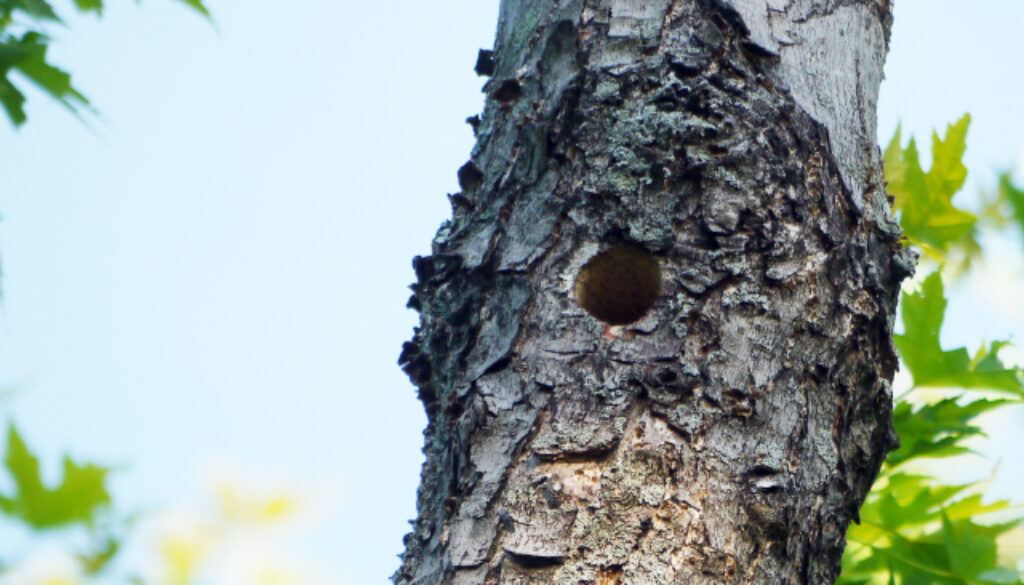Holes in Trees: Hazards or Harmless?
Holes in Trees: Hazards or Harmless?
Hazardous trees pose a danger to people and property. When storms or high winds hit, limbs – and often whole trees – fall to the ground, are holes in trees are they hazards or harmless?
Many fatal accidents and millions of dollars in property damage can be averted if homeowners heed the warning signs of a hazardous tree. By not paying attention to your trees, you are potentially placing your property, even your life, in jeopardy.
Tree defect clues
Fortunately, one can often read the clues that indicate a tree is prone to failure. For instance, if a tree has large branches attached with tight, V-shaped forks, you should consider having those branches removed or lightened. Other warning signs of structural instability include cracks in the trunk or major limbs, hollow and decayed areas, or the presence of extensive dead wood. Mushrooms growing from the base of the tree or under its canopy may be a sign of root decay. Remember to be thorough in your evaluation; the absence of fungus growth does not necessarily mean the tree is healthy.
It also pays to be highly suspicious of any tree that has had construction activities – such as trenching, addition or removal of soil, digging, or heavy equipment movement – anywhere under the spread of its branches. These activities can cause root death, which in turn could lead to the structural instability of the tree.
The sign most people recognize is a hollow in a tree. But even a large hollow does not necessarily signify a tree has become hazardous. Nor does it mean the hollow should be filled. Filling of hollow trees, a process called “cavity filling,” was practiced by arborists for many years. However, thanks to recent research, it has been discovered that cavity filling is not needed to support or improve the health of hollow trees.
Tree experts found that cavity filling with cement can damage a tree. The column of cement created in the tree by a cavity fill doesn’t move, just like a column on a building, but the tree is always moving. It sways with the wind constantly. The rubbing created by the swaying tree and the solid column of cement can further damage the tree.
Wood decay fungi that created the hollow in the first place may take advantage of new injuries created by the rubbing and invade the remaining healthy tissue of the tree. If cavity filling is desired for aesthetic reasons, there are new synthetic foams that can be sprayed into the cavity by professional arborists. These materials will bend with the swaying tree, reducing injury. However, there is really no reason to fill a cavity other than for aesthetic reasons; it doesn’t improve the tree’s health and doesn’t offer extra support. If structural support of a tree is required, a professional arborist will recommend cabling, bracing, propping, tree buying, or removing the tree – not cavity filling.
What can you do?
Find a professional: Johnson Ops Tree Care can assess your landscape and work with you to determine the best course of action to care for and maintain the trees and shrubs in your landscape. Call us for an appointment at 608 526-6297.




